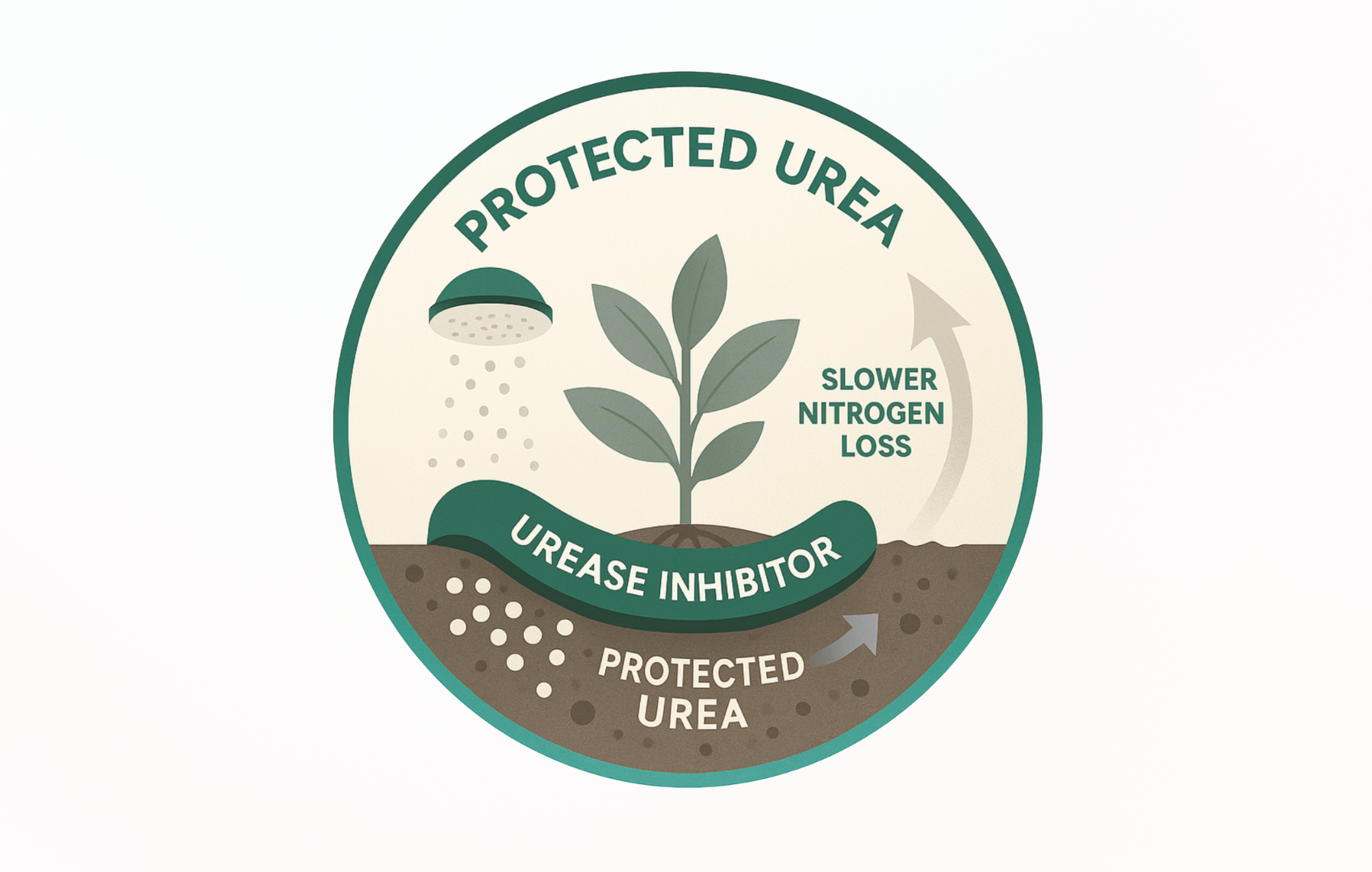Fertiliser Management
Fertiliser is one of the biggest sources of farm emissions, responsible for up to 35%.
Protected Urea tackles this by cutting nitrogen losses without sacrificing yield.
The Climate Issue
The food system depends on fertiliser. Farmers use it to grow the grass and crops that feed our animals and fuel our diets. One of the most important ingredients in fertiliser is nitrogen, which helps plants grow faster and stronger. Especially in pasture-based systems, where healthy grass means more milk or meat.
But when common nitrogen fertilisers like urea or CAN are applied without any treatment, much of it escapes into the air as ammonia or nitrous oxide (265 times more potent than CO₂). This causes pollution of the atmosphere and wastes resources.


The Solution: Protected Urea
Protected Urea is a smarter kind of nitrogen fertiliser. It’s just like regular urea, but treated with a special ingredient called a urease inhibitor.
This treatment slows down how quickly nitrogen is released into the soil. That means less nitrogen is lost to the air, and more stays where plants can actually use it. Protected Urea cuts nitrogen loss from 50% to just 10%, saving fertiliser and cutting emissions.
Key Benefits when using Protected Urea
Cut Emissions
Protected Urea cuts nitrogen loss by blocking urease enzymes in the soil, preventing ammonia and nitrous oxide emissions right at the source.
Fertiliser Efficiency
Less nitrogen lost means more available for crops. Protected Urea helps you get more from every kilogram applied, improving yields and reducing input needs over time.
Save Costs
Protected Urea costs less per unit of nitrogen than CAN. Combined with reduced losses, this means real savings, while supporting environmental goals.
Impact of Switching to Protected Urea
Switching to Protected Urea isn’t just a small tweak. It’s a strategic move that brings measurable advantages across your farm’s performance, sustainability, and bottom line. From cutting emissions to improving fertiliser efficiency, here’s what you gain when you make the switch.
Field studies show that switching entirely to Protected Urea can:
- Reduce ammonia emissions by 70–80%
- Lower nitrous oxide emissions by 40–60%
- Deliver up to €46/ha in savings compared to other
- Cut the farm’s total GHG footprint by 7–8% when used at rates of 200–250 kg N/ha
Below, we break down the impact of Protected Urea across three adoption scenarios.

Scenario
Price/kg Nitrogen
Net Savings/Farm
GHG Emissions
0% Adoption
(100% CAN)
€1.62
–
0.960 kg CO₂-eq/kg milk
50% Adoption
(50% CAN / 50% Protected Urea)
€1.52
€1,200
0.922 kg CO₂-eq/kg milk
100% Adoption
(Protected Urea only)
€1.41
€2,402
0.906 kg CO₂-eq/kg milk
Research and Sources
Farm Zero C
Protected Urea cuts nitrogen loss by blocking urease enzymes in the soil, preventing ammonia and nitrous oxide emissions right at the source.
Farm Zero C
Less nitrogen lost means more available for crops. Protected Urea helps you get more from every kilogram applied, improving yields and reducing input needs over time.
Farm Zero C
Protected Urea costs less per unit of nitrogen than CAN. Combined with reduced losses, this means real savings, while supporting environmental goals.
